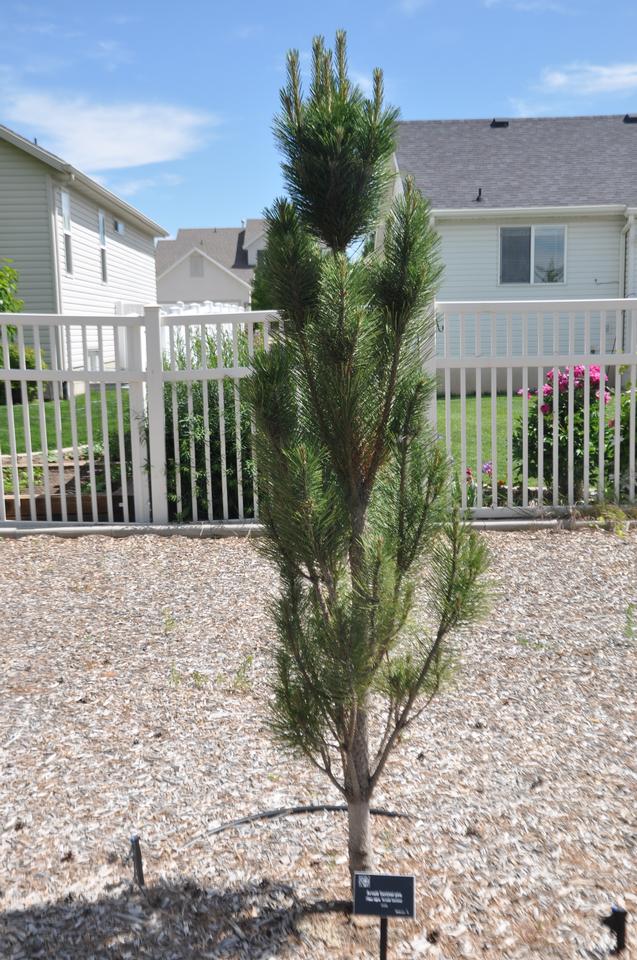Pine, Austrian
Pinus nigra
Pinaceae - Pine
Description
Leaves: Needles in bundles of 2; 3" to 6" long; slender; stiff; sharp-pointed; yellow-green to blue-green; evergreen, remain on tree 3-4 years.
Twigs/buds: Twigs orange-brown; glabrous. Buds silvery and striped, 1/2" to 3/4" long.
Flowers/fruit: Monoecious. Fruit a woody cone; about 2" to 3" long; reddish-brown; non-pointed scales.
Bark: Rough; platy; dark brown turning gray when older.
Wood: Sapwood nearly white; heartwood red-brown, somewhat oily and resinous; growth rings distinct.
General: A native of Europe, but grows well in Utah. Similar in size and habit to native ponderosa pine, but can be separated from ponderosa by the cone, needle, and bud characteristics described above. Shade intolerant.
Landscape Use: Widely planted in landscapes throughout Utah and the West. Nice, long-needled pine that is quite tough. Has been fairly disease- and insect-free in Utah, though Zimmerman pine moth, Diplodia tip moth, and Dothistroma needle blight have caused considerable problems elsewhere. Good individually or in a mass planting. Zones 4-7.
Cultivars: 'Arnold Sentinel', 'ENCI', 'Hornibrookiana', 'Pyramidalis'.
Characteristics
General
| Family | Pinaceae - Pine |
|---|---|
| Cultivar Availability | Yes |
| Hardiness Zone | 4-7 |
| Type | Conifer |
| Utah Native | No |
Growth
| Growth Rate | Medium |
|---|---|
| Mature Height | High |
| Longevity | High |
| Is Good Under Power Lines | No |
| Crown Shapes | Pyramidal |
Ornamental
| Bark | No |
|---|---|
| Fall Color | No |
| Flowers | No |
| Foliage | Yes |
| Fruit | No |
Tolerance
| Shade | Low |
|---|---|
| Salt | High |
| Drought | High |
| Poor Drainage | Low |
| Alkalinity | High |
| Transplanting | Medium |











